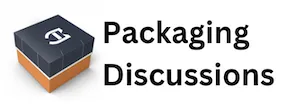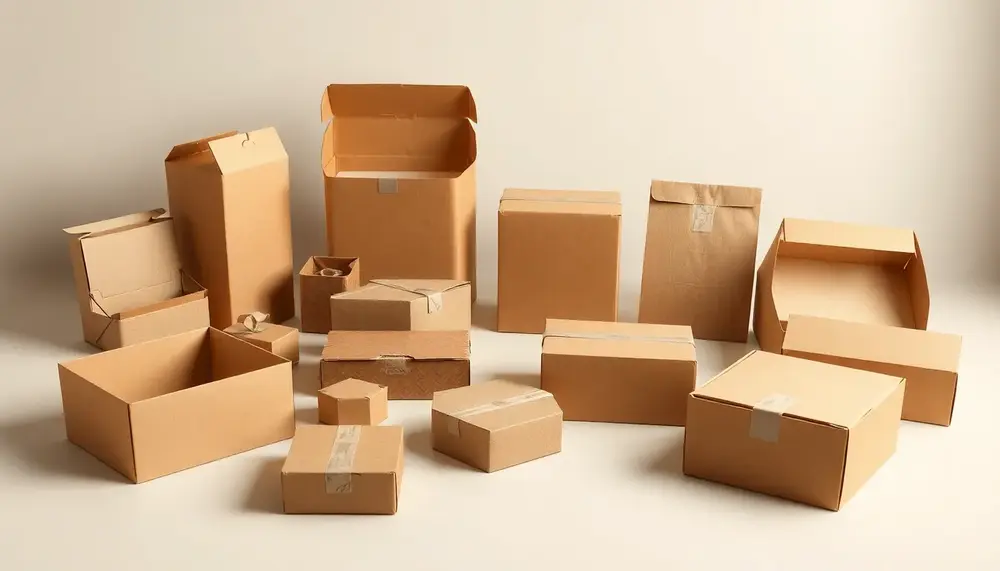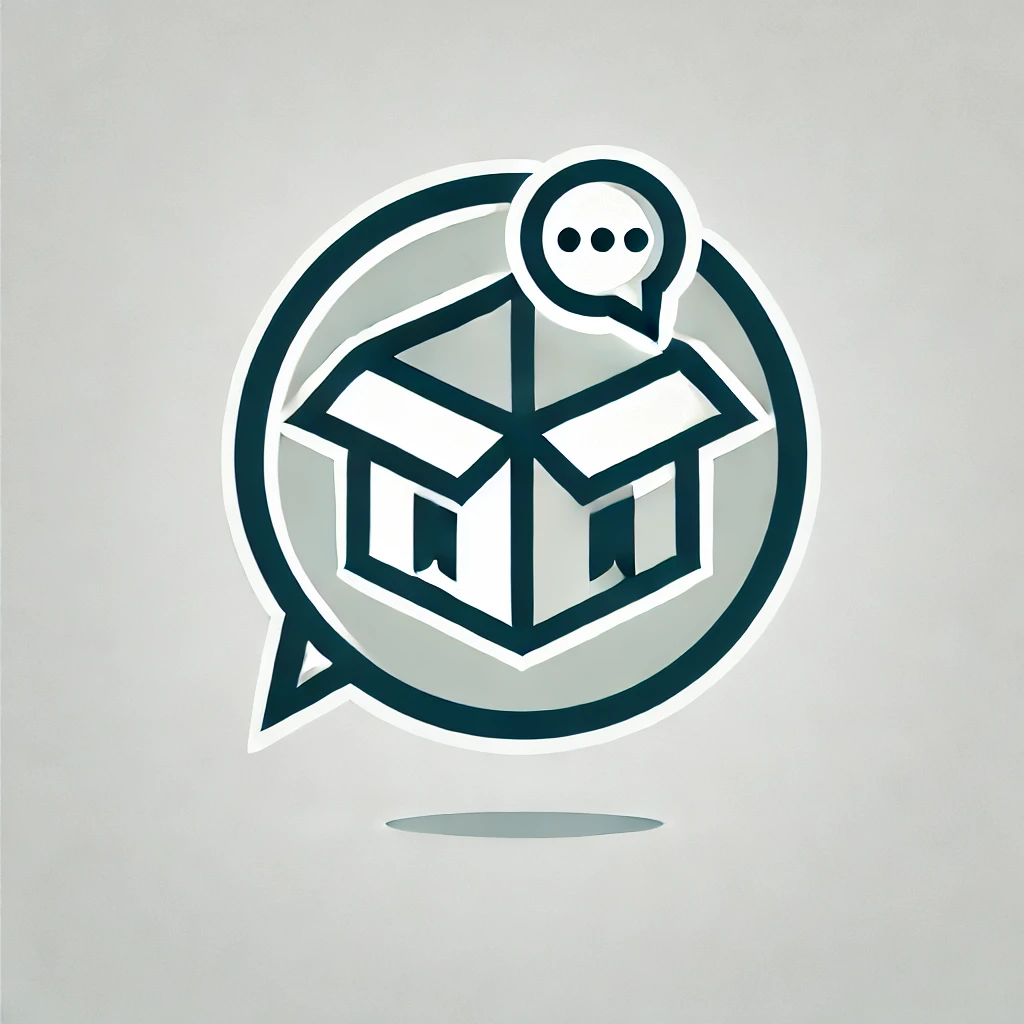Table of Contents:
Introduction to Packaging Kardus: A Blend of Creativity and Functionality
Packaging Kardus stands at the intersection of artistry and practicality, offering a canvas where design meets purpose. It’s not just about enclosing a product; it’s about telling a story, building a connection, and delivering an experience. The beauty of Kardus lies in its adaptability – from minimalist designs that whisper elegance to bold, intricate patterns that demand attention.
What makes Kardus unique is its ability to seamlessly combine aesthetics with utility. Every fold, cut, and crease serves a dual purpose: enhancing the visual appeal while ensuring structural integrity. Whether it’s a sleek skincare box or a robust shipping container, Kardus packaging embodies a perfect balance of form and function.
In today’s competitive market, where first impressions matter more than ever, Kardus packaging is a game-changer. It allows brands to stand out, not just by looking good but by working smart. This fusion of creativity and functionality is what makes mastering Kardus packaging an essential skill for designers, businesses, and anyone aiming to leave a lasting impression.
The Key Elements of Effective Packaging Design
Effective packaging design is more than just an attractive exterior; it’s a strategic blend of several key elements that work together to enhance the user experience and communicate a brand’s identity. To create packaging that truly resonates, each component must be carefully considered and executed with precision.
- Visual Hierarchy: The arrangement of design elements should guide the viewer’s eye naturally. From the logo placement to the typography, every detail should prioritize clarity and impact.
- Material Selection: The choice of materials plays a crucial role in both aesthetics and functionality. Whether it’s sturdy cardboard for durability or textured finishes for a premium feel, the material sets the tone for the packaging.
- Color Psychology: Colors evoke emotions and associations. A well-thought-out color palette can instantly convey the product’s purpose, target audience, or even its sustainability.
- Brand Storytelling: Packaging is a medium to tell a story. Through subtle design cues, patterns, or even small written messages, it can communicate the values and personality of the brand.
- Practical Usability: While aesthetics are vital, the packaging must also be user-friendly. Easy-to-open designs, secure closures, and portability are all aspects that contribute to a positive customer experience.
Ultimately, effective packaging design is about finding harmony between these elements. When done right, it not only protects the product but also creates a memorable interaction that leaves a lasting impression on the consumer.
Pros and Cons of Kardus Packaging Design, Structure, and Function
| Aspect | Pros | Cons |
|---|---|---|
| Design |
- Highly customizable for branding - Supports visual storytelling - Enhances unboxing experience |
- Complex designs can increase costs - Risk of over-design overshadowing functionality |
| Structure |
- Provides protection and durability - Flexible layouts for various products - Space-efficient flat-pack options |
- Some structures may require longer assembly times - Overspecialized designs may reduce versatility |
| Function |
- Lightweight yet robust materials - User-friendly with easy assembly - Reusability adds extra value |
- Lightweight designs may not suit extremely heavy items - Reusable options may not appeal to all consumers |
| Sustainability |
- Uses recyclable and biodegradable materials - Aligns with eco-friendly trends - Minimal waste through modular designs |
- Limited availability of compostable coatings - Costs may rise for premium sustainable solutions |
Exploring Structure: How Kardus Shapes Enhance Usability
The structure of Kardus packaging is not just a matter of aesthetics; it is a cornerstone of usability. The way a box is shaped, folded, and assembled directly impacts how it functions in real-world scenarios. A well-thought-out structure ensures that the packaging not only looks appealing but also serves its purpose efficiently.
One of the key advantages of Kardus is its versatility in structural design. From simple rectangular boxes to complex, multi-compartment layouts, the possibilities are nearly endless. Each shape brings unique benefits to the table:
- Reinforced Corners: Designs with reinforced edges or double folds provide extra durability, making them ideal for heavier or fragile items.
- Flat-Pack Efficiency: Many Kardus designs can be shipped flat and assembled on-site, reducing storage space and transportation costs.
- Custom Compartments: Internal dividers or compartments help organize products, ensuring they stay secure and presentable during transit.
- Innovative Openings: Creative opening mechanisms, such as magnetic flaps or pull tabs, enhance the user experience while maintaining structural integrity.
Moreover, the structural design of Kardus packaging often incorporates features that align with sustainability goals. For instance, interlocking tabs can eliminate the need for adhesives, making the packaging easier to recycle. By balancing form and function, Kardus shapes elevate usability while addressing practical concerns like storage, transport, and environmental impact.
Functionality in Focus: The Practical Benefits of Kardus Packaging
When it comes to packaging, functionality is the unsung hero that often determines a product's success. Kardus packaging excels in this area by offering practical benefits that go beyond mere aesthetics. Its thoughtful design and material adaptability make it a reliable choice for a wide range of applications.
Here are some of the standout functional advantages of Kardus packaging:
- Protection: Kardus packaging provides excellent protection for products during shipping and storage. Its sturdy structure minimizes the risk of damage, ensuring items arrive in pristine condition.
- Versatility: Whether it’s used for food, cosmetics, electronics, or fragile goods, Kardus can be tailored to meet specific needs. Its ability to adapt to different shapes and sizes makes it a go-to solution for diverse industries.
- Lightweight Design: Despite its durability, Kardus packaging remains lightweight, reducing shipping costs and making it easier to handle for both businesses and consumers.
- Ease of Assembly: Many Kardus designs are user-friendly, featuring foldable structures that can be quickly assembled without the need for additional tools or adhesives.
- Reusability: In many cases, Kardus packaging can be reused by consumers, whether for storage, gifting, or DIY projects, adding an extra layer of value to the product.
Functionality is not just about meeting basic requirements; it’s about exceeding expectations. Kardus packaging achieves this by combining practical features with innovative design, ensuring that it delivers both convenience and reliability in every use case.
Sustainable Trends in Kardus Design: Eco-Friendly Innovations
Sustainability has become a driving force in packaging design, and Kardus packaging is no exception. As environmental concerns grow, brands and designers are increasingly turning to eco-friendly innovations to reduce their carbon footprint while maintaining functionality and appeal. Kardus, with its recyclable and biodegradable properties, naturally aligns with these goals.
Here are some of the most notable sustainable trends shaping Kardus design today:
- Recycled Materials: Many Kardus designs now incorporate post-consumer recycled paper or cardboard, reducing the demand for virgin materials and promoting a circular economy.
- Minimalist Printing: To minimize the use of inks and dyes, designers are opting for minimalist aesthetics, using natural textures and subtle branding to create a sophisticated yet eco-conscious look.
- Plastic-Free Solutions: By eliminating plastic components like windows or lamination, Kardus packaging ensures easier recycling and a reduced environmental impact.
- Modular Designs: Innovative structures that can be reused or repurposed encourage consumers to give packaging a second life, whether as storage boxes or creative DIY projects.
- Compostable Coatings: New advancements in coatings allow Kardus packaging to remain moisture-resistant while being fully compostable, making it ideal for food and beverage applications.
These trends are not just about ticking the "green" box; they represent a shift in how packaging is perceived and utilized. By embracing these eco-friendly innovations, Kardus packaging demonstrates that sustainability and creativity can go hand in hand, offering solutions that benefit both businesses and the planet.
Custom Solutions: Industry-Specific Kardus Packaging Examples
Kardus packaging thrives on its ability to adapt to the unique demands of various industries. From luxury goods to everyday essentials, its versatility allows for tailored solutions that meet both functional and branding requirements. By focusing on industry-specific needs, Kardus packaging not only enhances product presentation but also addresses logistical and consumer expectations.
Here are some standout examples of how Kardus packaging is customized across different sectors:
- Food and Beverage: For this industry, Kardus designs often prioritize freshness and protection. Custom pizza boxes with venting systems or beverage carriers with ergonomic handles are prime examples of how structure meets practicality.
- Cosmetics and Skincare: High-end packaging for beauty products often incorporates intricate folds, magnetic closures, or embossed branding. These details create a premium unboxing experience while keeping delicate items secure.
- Electronics: Kardus packaging for gadgets includes reinforced compartments and cushioning to protect sensitive components. Custom inserts ensure that items like headphones or chargers stay in place during transit.
- Retail and Apparel: Foldable Kardus boxes with sleek finishes are commonly used for clothing and accessories. They are designed to be reusable, aligning with the growing trend of sustainable fashion packaging.
- Subscription Boxes: The subscription model relies heavily on Kardus packaging to deliver a memorable experience. Unique designs with personalized compartments cater to diverse product assortments, from snacks to tech gadgets.
Each industry has its own set of challenges and opportunities, and Kardus packaging rises to the occasion with its ability to blend customization with functionality. These tailored solutions not only protect and present products effectively but also reinforce brand identity, making them an integral part of the consumer journey.
Creative Inspiration for Unique Kardus Designs
Creativity is the beating heart of Kardus packaging design. It’s what transforms a simple box into a memorable experience, a functional necessity into a piece of art. For those looking to push the boundaries of traditional packaging, inspiration can come from the most unexpected places. Whether it’s nature, architecture, or even pop culture, unique Kardus designs often emerge from thinking outside the box—quite literally.
Here are some ideas to spark your imagination and take your Kardus designs to the next level:
- Interactive Elements: Add playful features like pull tabs, hidden compartments, or foldable sections that encourage users to engage with the packaging. For example, a skincare box could reveal a mini guide to self-care as it unfolds.
- Nature-Inspired Patterns: Use organic shapes, textures, or colors to mimic natural elements. A box for eco-friendly products could feature leaf-shaped cutouts or earthy tones to reinforce its message.
- Storytelling Through Layers: Create a narrative by designing packaging with multiple layers that unveil the product step by step. Each layer could include a small message or visual clue, building anticipation.
- Bold Typography: Let typography take center stage by using oversized fonts, unique lettering styles, or embossed text. This approach works especially well for minimalist designs that rely on striking simplicity.
- Geometric Shapes: Move beyond the traditional rectangular box and experiment with hexagons, triangles, or even asymmetrical forms. These unconventional shapes immediately catch the eye and set your packaging apart.
Remember, the most compelling designs often blend functionality with an emotional or sensory connection. Whether it’s through tactile finishes, vibrant colors, or clever mechanics, unique Kardus packaging has the power to surprise and delight, leaving a lasting impression on the consumer.
How to Start Your Own Kardus Packaging Project
Starting your own Kardus packaging project can feel like a daunting task, but with the right approach, it becomes an exciting journey of creativity and problem-solving. Whether you’re designing for a personal project or a commercial brand, the key is to break the process into manageable steps and focus on the essentials.
Here’s a step-by-step guide to help you kick off your Kardus packaging project:
- Define Your Purpose: Begin by identifying the core purpose of your packaging. Is it for shipping, retail display, or a premium unboxing experience? Knowing this will guide your design and material choices.
- Understand Your Product: Study the dimensions, weight, and fragility of the product you’re packaging. This will help you determine the structure and level of protection required.
- Sketch Your Ideas: Start with rough sketches to visualize your concepts. Don’t worry about perfection at this stage; focus on exploring shapes, folds, and layouts that align with your goals.
- Choose Materials Wisely: Select materials that balance aesthetics, functionality, and sustainability. For example, opt for recycled cardboard if eco-friendliness is a priority, or textured finishes for a luxury feel.
- Create a Prototype: Build a physical prototype to test your design. This step is crucial for identifying potential flaws in structure, usability, or visual appeal before moving to production.
- Gather Feedback: Share your prototype with others—colleagues, clients, or even potential customers. Their insights can help refine your design and ensure it meets user expectations.
- Finalize and Produce: Once you’ve made adjustments based on feedback, finalize your design and prepare it for production. Work with a trusted manufacturer to ensure quality and consistency.
Starting small and iterating as you go is often the best approach. Don’t be afraid to experiment or make mistakes; every tweak brings you closer to a design that’s both functional and visually striking. With patience and creativity, your Kardus packaging project can become a standout success.
Leveraging Technology in Kardus Design and Production
Technology has revolutionized the way Kardus packaging is designed and produced, offering tools and processes that enhance precision, efficiency, and creativity. From digital prototyping to automated production lines, leveraging modern technology can significantly elevate the quality and scalability of your packaging projects.
Here are some key ways technology is transforming Kardus design and production:
- 3D Modeling and Prototyping: Advanced software allows designers to create detailed 3D models of Kardus packaging. This enables real-time visualization of dimensions, folds, and textures, reducing the need for multiple physical prototypes.
- Laser Cutting and Engraving: Laser technology ensures precise cuts and intricate designs, making it possible to create complex patterns or custom branding elements with unmatched accuracy.
- Digital Printing: High-resolution digital printing offers vibrant colors and detailed graphics, enabling brands to experiment with bold designs and personalized packaging without the limitations of traditional printing methods.
- AI-Driven Optimization: Artificial intelligence can analyze design layouts to optimize material usage, reducing waste and production costs. It can also suggest structural improvements for better durability and functionality.
- Automation in Manufacturing: Automated machinery streamlines the production process, ensuring consistent quality and faster turnaround times. This is particularly beneficial for large-scale projects where precision and efficiency are critical.
By integrating these technologies into your Kardus packaging workflow, you can achieve a balance of innovation and practicality. Whether you’re crafting a one-of-a-kind design or scaling up for mass production, technology provides the tools to push boundaries and deliver exceptional results.
Closing Thoughts: Elevating Packaging through Kardus Mastery
Mastering Kardus packaging is more than just understanding its design, structure, and functionality—it’s about elevating the entire packaging experience. From the first sketch to the final product, every decision plays a role in shaping how a brand communicates its values and how consumers interact with the product. Kardus packaging, with its adaptability and creative potential, offers endless opportunities to innovate and inspire.
As you refine your approach to Kardus design, remember that the true power of packaging lies in its ability to connect. Whether it’s through sustainable materials, clever structural choices, or bold visual storytelling, each element contributes to a narrative that resonates with the end user. This is where artistry meets strategy, and where functionality transforms into a memorable experience.
In a world where packaging often serves as the first touchpoint between a brand and its audience, mastering Kardus is not just a skill—it’s a competitive advantage. By embracing creativity, leveraging technology, and prioritizing sustainability, you can create packaging that doesn’t just protect a product but elevates it, leaving a lasting impression that goes far beyond the unboxing moment.
FAQ about Kardus Packaging Design and Functionality
What makes Kardus packaging unique?
Kardus packaging stands out due to its seamless blend of aesthetics and functionality. It transforms basic cardboard into visually appealing, structurally sound packaging that enhances both branding and usability.
How does Kardus packaging support sustainability?
Kardus packaging is eco-friendly by nature, often made from recyclable or biodegradable materials. Sustainable trends include using recycled cardboard, minimalist designs, and compostable coatings to reduce environmental impact.
What types of products can Kardus packaging be used for?
Kardus packaging is versatile and can be tailored for various industries, including food and beverages, cosmetics, electronics, fashion, and subscription boxes. Its adaptability makes it suitable for both everyday and luxury products.
What are the key elements of designing effective Kardus packaging?
Effective Kardus packaging design involves visual hierarchy, material selection, color psychology, brand storytelling, and practical usability. These elements work together to create a functional and visually impactful design.
How does technology enhance Kardus packaging design?
Technology such as 3D modeling, laser cutting, digital printing, and AI optimization streamlines the design and production process, ensuring precision, efficiency, and innovative results in Kardus packaging projects.






